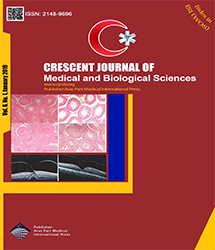
| Original Article | |
| The Effects of Nanocomposite Containing Ostrich Eggshell on Calvaria Bone Formation in Rabbit: Radiographic and Hematological Survey | |
| Hanieh Alemi1, Ahmad Asghari1, Gholamreza Abedi1, Abolfazl Akbarzadeh2, Pejman Mortazavi4 | |
| 1Department of Veterinary Surgery, Science and Research Branch, Islamic Azad University, Tehran, Iran 2Drug Applied Research Center, Tabriz University of Medical Sciences, Tabriz, Iran 3Universal Scientific Education and Research Network (USERN), Tabriz University of Medical Sciences, Tabriz, Iran 4Department of Veterinary Pathology, Science and Research Branch, Islamic Azad University, Tehran, Iran |
|
|
CJMB 2019; 6: 018-023 Viewed : 5765 times Downloaded : 3577 times. Keywords : Nanocomposite, Ostrich eggshell, Calvaria healing, Rabbit |
|
| Full Text(PDF) | Related Articles | |
| Abstract | |
Objectives: Available methods for treating bone defects occasionally include limitations regarding supplying and applying the biological agents, thus mediators of bone regeneration still the safe method. The current study aimed to determine the possible effects of eggshell as an agricultural waste product in the form of nanocomposite containing ostrich eggshell (NCOE) on calvaria bone formation in rabbits. Materials and Methods: A number of 15 adult male New Zealand white rabbits were used in this study. Four full-thickness skull defects were created in the calvarial bone. The first defect (control) was kept unfilled. However, the second and third defects were filled with nanomaterial and using an autogenous bone, respectively. In addition, the fourth one was filled with a mixture of NCOE and autogenous bone. On the 30th, 60th, and 90th days after surgery, the blood samples were obtained and red blood cells, white blood cell, hemoglobin (HGB), hematocrit (HCT), mean cell volume (MCV), mean cell HGB, and platelets (PLT) were determined. On the above-mentioned days, the animals were sacrificed and the bone density was determined using radiography images. Results: Based on the results, a significant difference was observed on bone formation in control (0.18 ± 0.01 mm Al equivalent), autograft (0.1 ± 0.01 mm Al equiv.), NCOE (0.12 ± 0.01 mm Al equiv.), and NCOE + autograft (0.07 ± 0.01 mm Al equiv.) defects at day 30 post-surgery (P < 0.05). Further, significant differences were found on bone density in control (0.09 ± 0.01 mm Al equiv.), autograft (0.13 ± 0.01 mm Al equiv.), NCOE (0.14 ± 0.01 mm Al equiv.), and NCOE + autograft (0.20 ± 0.01 mm Al equiv.) defects at day 60 post-surgery (P < 0.05). Furthermore, significant differences were detected regarding bone density in control (0.15 ± 0.01 mm Al equiv.), autograft (0.21 ± 0.01 mm Al equiv.), NCOE (0.22 ± 0.02 mm Al equiv.), and NCOE + autograft (0.29 ± 0.01 mm Al equiv.) defects after 90 days (P < 0.05). The results revealed that the NCOE + autograft defect had a better bone formation in all stages of the study (P < 0.05). However, no significant effect was observed on blood hematology indexes (P > 0.05). Conclusions: Generally, based on the results, NCOE + autograft had positive effects on calvaria healing in the rabbit. |
Cite By, Google Scholar
Google Scholar
PubMed
Online Submission System
 CJMB ENDNOTE ® Style
CJMB ENDNOTE ® Style
 Tutorials
Tutorials
 Publication Charge
Medical and Biological Research Center
About Journal
Publication Charge
Medical and Biological Research Center
About Journal
Aras Part Medical International Press Editor-in-Chief
Arash Khaki
Deputy Editor
Zafer Akan


















